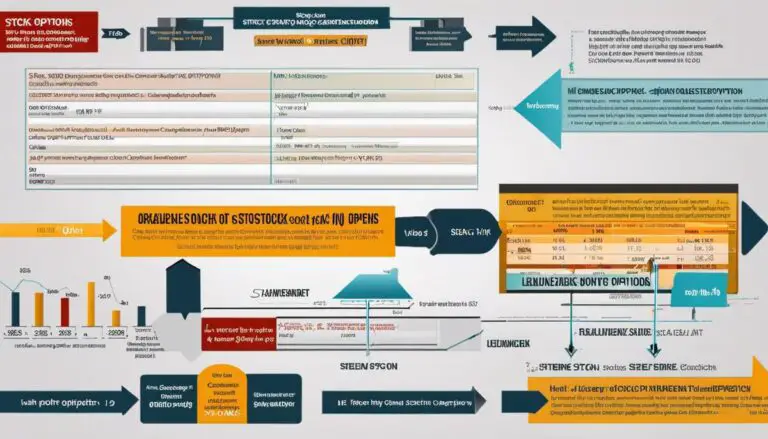Embarking on a journey through the world of stock investing can be both exhilarating and daunting. To navigate this dynamic terrain successfully, it’s crucial for individuals to arm themselves with a robust risk management strategy. At the heart of this strategy lies the art of diversification, a technique that mitigates the trepidation of erratic market spells by spreading investments across a tapestry of sectors and asset classes. Alongside, recognizing one’s own risk tolerance emerges as a cornerstone, ensuring that investment decisions resonate with personal financial aspirations and emotional steadfastness. Moreover, the discipline of diligent market research anchors an investor’s ability to parse through market trends, study corporate financial health, and interpret economic signals—empowering investors to construct a portfolio that not only stands resilient but is also primed for growth.
Diversification
Diversification: Your Strategic Armor Against Investment Risk
In the high-octane world of investing, the savvy entrepreneur knows that volatility is a constant companion. Picture this: a portfolio concentrated in a single industry nosedives due to unforeseen regulations, rendering solid stocks to mere paperweights. That’s the wake-up call nobody wants but many receive. Yet, here’s the silver bullet—diversification. It’s more than a buzzword; it’s a strategic maneuver that can shield your hard-earned capital from the financial storms.
Diversification is the investment equivalent of not putting all your eggs in one basket. It’s the practice of spreading investments across various asset classes, industries, and geographic regions. What it accomplishes is akin to an intricate dance of balancing risk against potential returns, effectively tempering the market’s unpredictable ebbs and flows. When one asset tumbles, another may climb or hold steady, creating a stabilizing effect on your portfolio’s overall value.
Here’s a breakdown of how diversification mitigates investment risk:
- Asset Class Diversification: Allocating investments among stocks, bonds, real estate, and commodities can insulate the portfolio. Why? Because different asset classes often move in opposition to one another. Interest rate hikes may bolster bond yields but can depress stock markets. By holding both, you balance out potential downsides, creating smoother long-term investment sailing.
- Industry Diversification: Even within asset classes, such as stocks, risks lurk in concentrated industry exposure. An oil industry slump shouldn’t endanger your entire portfolio. By investing in sectors such as technology, healthcare, finance, and consumer goods, you’re making your portfolio’s performance less dependent on the fate of a single sector.
- Geographic Diversification: Never underestimate the power of global reach. With international diversification, you’re hedging against domestic market volatility. When the US markets sneeze, Asia or Europe might be enjoying robust health, bolstering your investments against a full-blown cold.
- Company Size Diversification: Sprinkling investments across large-cap, mid-cap, and small-cap companies is another layer of precaution. Smaller companies often offer high growth potential but with greater risk, while large companies typically provide stability with moderate growth.
Let’s not forget, however, that diversification is not a one-size-fits-all solution. It does not eliminate risk altogether but rather manages and reduces it to acceptable levels for the investor. It’s essential to tailor diversification strategies to align with specific financial goals, time horizons, and risk tolerance.
Smart investors and entrepreneurs know that the future isn’t just to predict; it’s to prepare for. Diversification is about building a resilient portfolio that can withstand the shocks and shudders of global markets. It’s about being proactive, not reactive. It’s a key ingredient in a recipe for long-term investment success.
Dial in on diversification and watch your investment health indicators stabilize. Remember, in a world full of high-fliers and deep-divers, a balanced approach keeps you afloat and ahead. Let the market waves come; your diversified portfolio – your financial fleet – is built to navigate through the squalls and the calm with equal prowess.

Risk Assessment
When diving headlong into the vibrant world of stock investing, it’s easy to get caught up in the excitement of potentially lucrative returns. Yet, one key factor that often determines the path of an investor’s journey is their risk tolerance. Understanding personal risk tolerance isn’t just a mere formality; it’s foundational to crafting a strategy that can withstand the ebbs and flows of the market tide.
Individual risk tolerance is influenced by myriad factors – psychological comfort with uncertainty, financial stability, investment experience, and even the macroeconomic climate. It’s a personal index of how much market volatility one can stomach without losing sleep. While one investor might view a market dip as a discounted buying opportunity, another might see it as a precursor to potential loss.
What sets risk tolerance apart in stock investing is its role in portfolio composition. High-risk-tolerance investors might lean into growth stocks or volatile sectors such as tech or biotech, betting on high returns. Conversely, those with lower risk tolerance may prefer blue-chip or dividend-bearing stocks, which tend to provide steady, albeit potentially more modest, growth.
Why does this matter? Because aligning investments with individual risk tolerance influences more than just asset selection – it dictates investment behavior. During market downturns, an investor aligned with their risk comfort is more likely to remain poised, holding steady on the course set by their well-considered strategy. Jacking up the stakes beyond one’s comfort level can trigger impulsive decisions—like panic selling or erratic trading—actions often regretted when markets rebound.
Furthermore, risk tolerance shapes the decision-making process itself. Savvy investors analyze opportunities not just through potential gains but also through the lens of their personal risk parameter. They ask questions like: “How will this asset react to market fluctuations?” or “Can my portfolio absorb the shock if this sector takes a hit?”
A misconception to clear up: risk tolerance is not static. It evolves alongside life stages, financial changes, and market experiences. Regular assessments and adjustments ensure that investment strategies remain relevant and effective, especially as short-term goals give way to long-term aspirations. Transitioning from aggressive growth strategies to focusing on wealth preservation as retirement looms is a classic example of risk tolerance in action.
In conclusion, disregarding individual risk tolerance is akin to steering a ship without a compass. Investors must not only map their financial destinations but also ensure they have the right constitution for the voyage ahead. The comprehensive understanding of risk appetite empowers investors to navigate market tumult with foresight and fortitude, positioning them not just to survive but thrive amid the constant flux of stock investing. Embrace risk tolerance as not just a guardrail, but as a strategic asset—a move that epitomizes astute, forward-thinking investment.

Market Research
Now that the groundwork on diversification and risk tolerance is set, let’s shift focus to the potent role of thorough market research in managing risk.
In the contemporary business landscape, market research serves as an invaluable compass, guiding entrepreneurs and investors through the tumultuous seas of market uncertainties.
Understanding Customer Demand: In the heart of risk management, lies the ability to predict and meet customer demand. Market research empowers with insights into consumer behavior, preferences, and trends. It’s the tool that translates customer needs into actionable business data, enabling precise targeting and product development that resonates with the market. Identifying Market Trends and Cycles: Markets ebb and flow with trends and cycles, and the savvy entrepreneur rides these with dexterity. Market research uncovers emerging trends, providing a first-mover advantage, and it explores cyclical patterns, allowing businesses to anticipate changes, adapt strategies, and fortify against potential downturns. Competitor Analysis: Underestimating competitors is a folly no successful entrepreneur can afford. Market research entails meticulous competitor analysis, unveiling their strategies, strengths, and weaknesses. Leverage this intelligence to carve out competitive advantages, sidestep potential threats, and capitalize on competitors’ oversights. Economic Shifts and Regulatory Changes: Economic and regulatory landscapes are ever-evolving, presenting risks to the uninitiated. Thorough market research incorporates economic forecasting and regulatory tracking, ensuring a business stays ahead of changes that could impact operations, profitability, and market position. Market Segmentation: Not all customers are created equal. Market research aids in segmenting the market to identify the most lucrative areas. Tailoring products and marketing efforts to specific segments ensures resources are allocated for the greatest impact and return, reducing the risk of untargeted, scattershot approaches. Innovation Through Insights: The lifeblood of any business is its ability to innovate. Market research provides a deep well of insights for innovative product development, allowing businesses to fill gaps in the market, serve unmet needs, and differentiate from competition—turning potential risks into groundbreaking opportunities. Foresight and Strategic Planning: The true value of market research lies in its contribution to strategic planning. It enables businesses to look past the horizon, plan long-term strategies, and make informed, data-driven decisions that minimize risks and capitalize on potential growth areas.In conclusion, thorough market research is a strategic ally in managing risk. It is the confluence of deep customer understanding, trend anticipation, competitive intelligence, adaptability to economic and regulatory changes, focused market segmentation, and strategic planning. Harness this powerful tool; let it inform decisions and navigate through the complex market terrain with confidence and precision. Remember, the difference between a calculated risk and a gamble lies in the quality of market research that predicates it.

Mastering the intricacies of stock investing is akin to steering a ship through ever-shifting seas—the adept investor must remain vigilant, adaptable, and informed. At the heart of prudent investing is a commitment to continuous learning and strategizing, a process that involves understanding the interplay between diverse investment realms and the ever-evolving economic landscape. As investors finely tune their portfolios and fortify them against potential storms, they cultivate not only financial acumen but an enduring confidence to make decisions that can withstand the tests of time and turbulence. By marrying the principles of diversification, risk assessment, and market research, you stand at the helm, ready to chart a course toward your financial horizons with wisdom, foresight, and aplomb.



